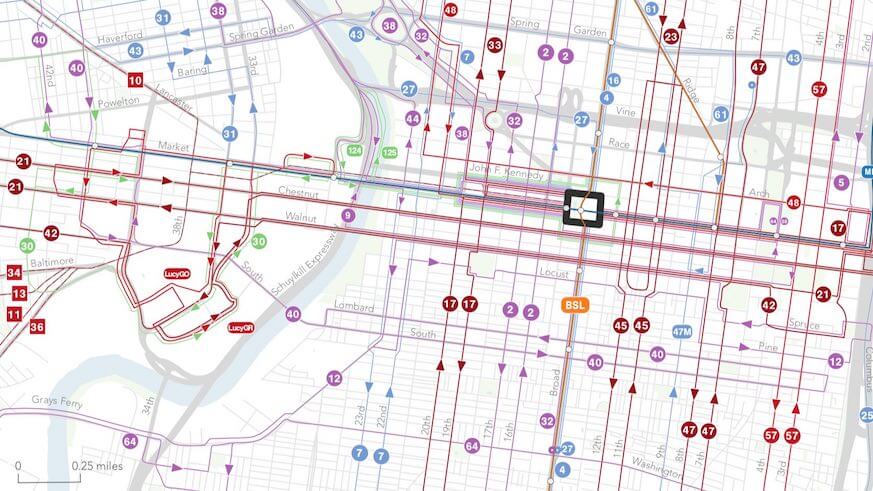There are lots of SEPTA bus routes to choose from, but do the options still make sense? Or would fewer options along more major routes work better? Are there redundancies in service, and could the system be more efficient if passengers didn’t have to pay a dollar for transfers?
These are some of the complicated questions SEPTA is seeking to answer in a new study, the Comprehensive Bus Network Redesign (CBNR) project. Last week, they released the Philadelphia Bus Network Choices Report, the first stage in the process toward what could be a potential system-wide overhaul and redesign of all SEPTA bus routes, which looked at what bus routes are busiest.
“This report provides a sober diagnosis of the prospects and challenges facing our beloved bus system in a rapidly changing environment,” said Michael Carroll, Deputy Managing Director of the Office of Transportation and Infrastructure Systems, in a statement. “This report does not constitute a recipe for the future of bus service in Philadelphia, more a thorough catalogue of ingredients. The choices report gives clarity to the benefits and trade-offs of different approaches and sets the stage for the important work that lies ahead.”
Jarrett Walker + Associates (JWA) created the study looking at options “to enhance service and ridership,” SEPTA said, noting that while no specific service changes have been made, SEPTA and the city are looking to potential short and long-term improvements.
Among the recommendations that JWA made were:
-redesigning the network to -increase ridership and enable people to get to more places, sooner
-Reallocate redundant service and focus on frequent lines
-Examine trade-offs between coverage and ridership goals
-Focus service on transit centers and better links to regional rail
-Remove fare penalties for transfers
As SEPTA undertakes its first-ever full review of its bus network, they are continuing other projects to improve bus efficiency, including expanding Direct Bus service, addressing operational issues and continuing to set up more new bus shelters, they said. The next step in the years-long CNBR process will be a Request for Proposals (RFP) to consultants who can build on this report to create recommendations for a redesign of bus routes. Public input will be sought at future meetings.
























